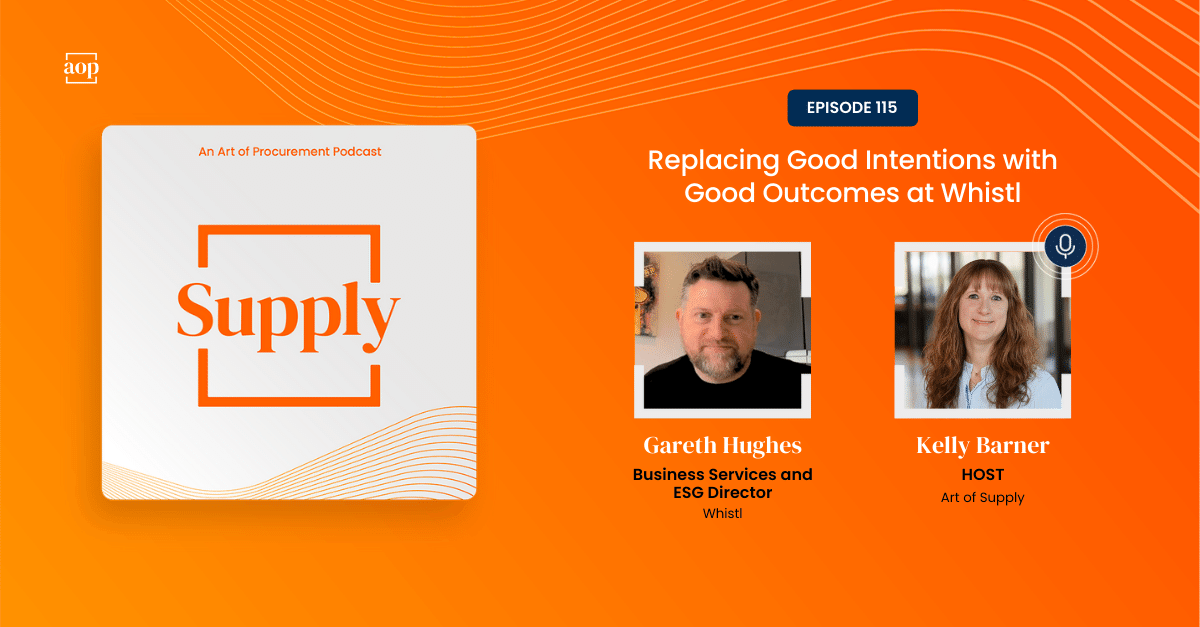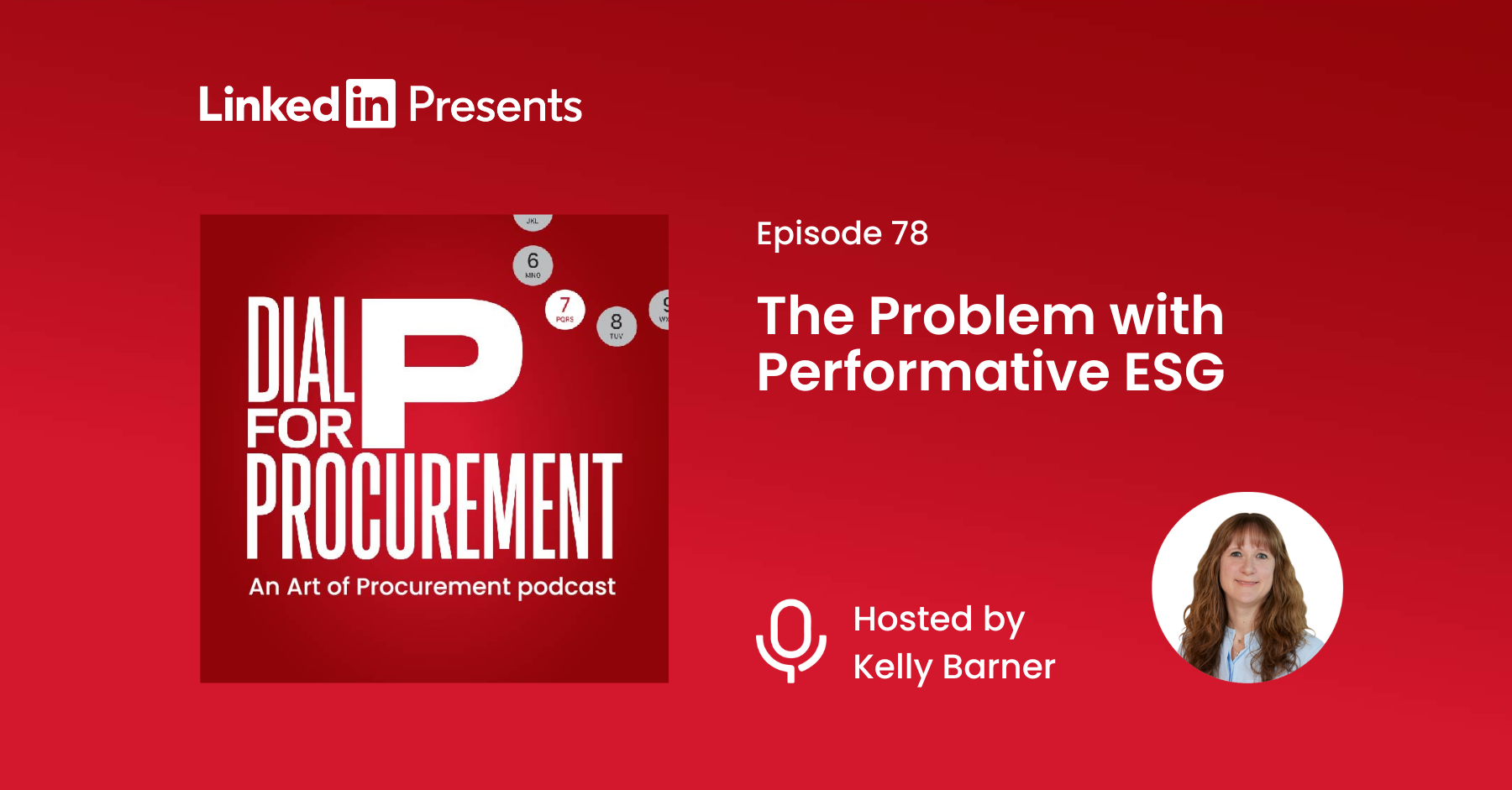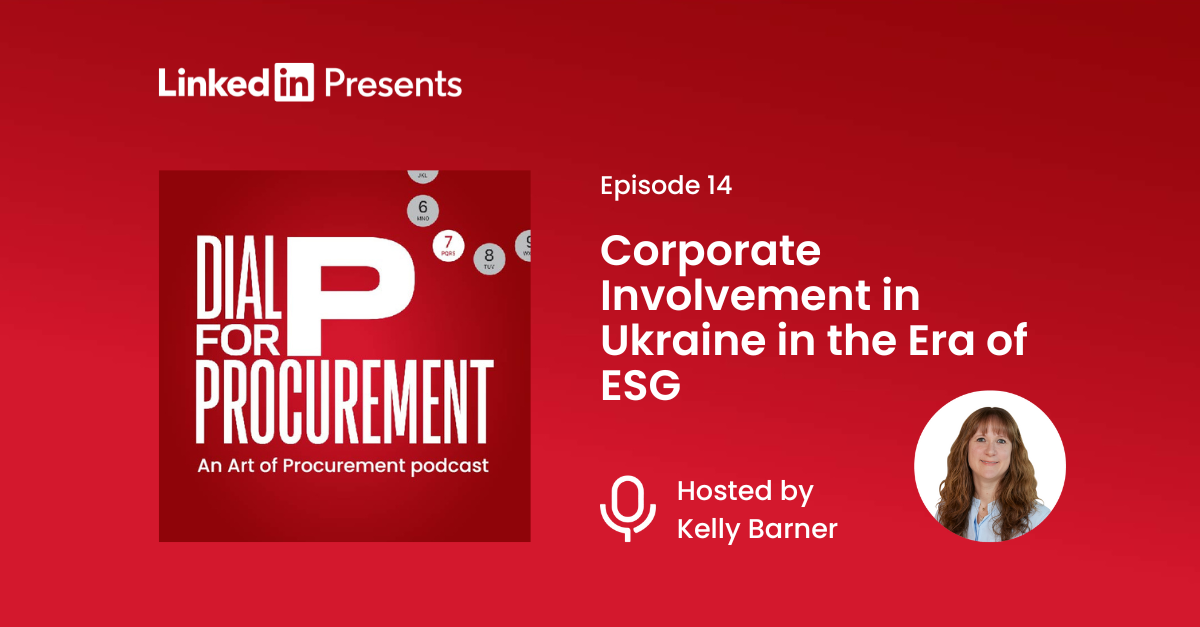
“The best-laid plans of mice and men often go awry.”
Scottish poet Robert Burns wasn’t thinking of 21st-century corporate business practices back in the 1700s when he wrote this age-old truism, but nonetheless the sentiment is universal even today – you can start out with the best of intentions, but, when the execution is off, the whole thing can go pear-shaped before you know it.
In the supply world, it’s unfortunate that this is a reality for ESG initiatives at some organizations. Even large enterprises with Herculean budgets may fail to prioritize the efficient processes, realistic strategies and goals, and agile operating methods that lead the business toward tangible, measurable ESG outcomes. The intent to make a positive impact might be there, but to make it happen, procurement has to traverse the wide chasm that exists between a ‘nice-to-have’ initiative that makes the company look good in public and concrete outcomes that drive real value for the business and suppliers alike.
In this episode of the Art of Supply podcast, I spoke with one supply chain leader whose team has been doing just that – connecting ambitious ESG goals with real bottom-line results.
Gareth Hughes is the Business Services and ESG Director for Whistl, a UK based e-commerce and logistics business that provides business mail and eFulfillment services. Gareth’s current responsibilities include procurement, property, facilities, fleet, and delivering ESG impact. His team at Whistl has shown such success with their ESG strategy that they achieved EcoVadis Gold status in recognition of the company’s strong and measurable commitment to sustainability.
Whistl serves as a great example of how a company centered around real estate and logistics can develop a strong strategic approach to advancing their ESG mission and building on that success year after year. Yes, their ESG vision is important, but they also know how to translate that vision into real-world impact.
In the podcast, Gareth shared some of the key strategies he and his team use to avoid the “best laid plans” trap and actually deliver on their ESG goals.
Is there such a thing as too much ‘due diligence’?
Yes, says Gareth.
“These days, we ask more and more of our suppliers whether that’s through an RFX process or ongoing due diligence. I sometimes sit there and think, my god, that’s a lot to ask a company,” said Gareth. A long, laborious questionnaire for suppliers can be especially burdensome to them if they’re a small team or lack the data and resources to efficiently run through all their requests.
There’s often a disconnect between the volume and breadth of information that the business is trying to get from suppliers and the suppliers’ ability to provide that in a timely, accurate way.
“We want to know everything now because due diligence is important, whether it’s about modern slavery, anti-bribery, ESG, or diversity … and we’re going to ask our suppliers loads and loads of information to find this out,” he said. “But, if they are a small business, this becomes a massive burn. It’s easy for us to automate and ask for that information, but it’s a hell of a burden on some suppliers to answer it.”
Instead, he says, supply chain leaders have to take thoughtful inventory of the information or data they’re asking from suppliers and consider if all of it is in fact necessary and, if so, what are they actually doing with that information to help drive better ESG outcomes for the business.
Know when to say “no”
A true ESG trailblazer, says Gareth, isn’t the leader or the team that just says “yes” to every ESG initiative that comes up. “We also have to be mindful about how much change we’re bringing into the business and how much effort or resources are involved.”
Oftentimes, change programs that aren’t related to ESG might have to happen to enable the wider outcomes for the business, whether that’s upgrading a finance system, bringing in new equipment, or process reorganization. Driving real impact through ESG can cause a ripple effect of change.
Because of this, says Gareth, “you can’t go trailblazing with something without considering the costs and benefits because it won’t get anywhere. The pushback sometimes is just as important to make sure we stay on plan.”
Practice data-driven ESG
Procurement teams have to have the right data streams in place in order to make sure they’re focused on the right problems and also well positioned to identify low-hanging ESG fruit.
“The data will guide you to where some of your hotspots are, and this isn’t just an ESG thing, but a business thing – it’s really powerful stuff,” said Gareth.
Data can help procurement stay focused on the initiatives that will truly move the needle for the company, as well as for suppliers, and consistent visibility can help the team course-correct as necessary while also celebrating those hard-won ESG victories along the way.
“There are some detractors who might think ESG is a kind of ‘fluffy’ subject,” he said, “but more and more, with reporting requirements and the hard work we do around data, ESG is far from fluffy.”




